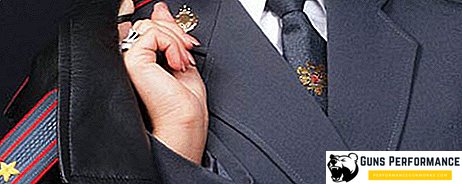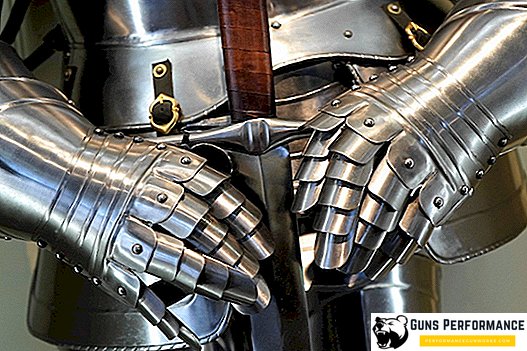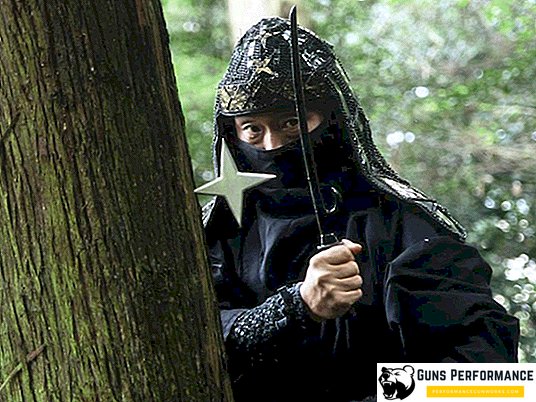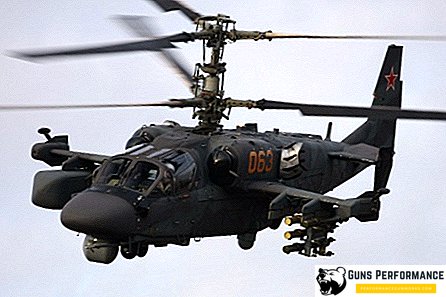
Su-30SM - Russian heavy multi-purpose fighter generation 4 + +, intended primarily to gain air supremacy. In fact, this is a modification of the Su-30MKI, designed for the Russian air force. The first flight of the Su-30SM fighter aircraft made in 2012.
Su-30MKI began to be developed in the mid-90s specifically for the Indian Air Force (MKI - “modernized, commercial, Indian”). In turn, the Su-30 fighter is the result of a deep modernization of the Su-27 fighter, which began in the Soviet Union (1988).
To date, the Su-30SM is considered one of the best fighters in the world, it has excellent performance, this machine can rightly be called the pinnacle of the development of the line of Su-27 aircraft.
The Su-30SM fighter is able to operate day and night, in all weather conditions, it can not only shoot down enemy planes, but also destroy ground targets, as well as conduct air reconnaissance and target designation to other planes of the group (including Su-34 bombers) .
The first flight of the Su-30SM took place on September 21, 2012. At the end of the same year, the aircraft was put into service and the Ministry of Defense of the Russian Federation signed a contract for the supply of 30 fighters by the end of 2016. As of 2014, the Russian Air Force ordered 60 fighters, additional contracts were signed in 2018 and 2018. As of November 2018, 71 Su-30SM were sent to the front lines. Another four Su-30SM will be manufactured for the Air Force of Kazakhstan.
Currently, several Su-30SM aircraft are taking part in a military operation in Syria.
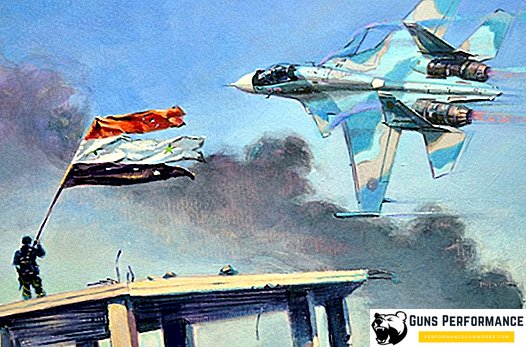
History of creation
The operation of the Soviet multipurpose Su-27 fighter began in 1986. The rapid development of technology has changed not only the onboard equipment of fighters and their technical characteristics, but also the very concept of air combat. The use of radar with an active phased array allowed fighters not only to conduct air combat, but also to control a group of combat vehicles, taking on part of the functions of the DRLO aircraft.
On this basis, the air defense command wanted to get a new aircraft that could not only carry out the tasks of an interceptor fighter, but also be used as a flying command post for the Su-27 group. Given the huge length of the borders of the Soviet Union, as well as a large number of undeveloped areas, a small number of suitable airfields, such a machine was simply extremely necessary.
The military believed that a double fighter would be better suited for such tasks, citing the Su-27UB as an example - a combat training machine with dual control, but still maintaining the combat capabilities of a single-seater.
Modern fighter radar and electronic on-board equipment is so complex and multifunctional that it is quite difficult for one pilot to fully realize his capabilities in a fast-moving, maneuverable air battle. In addition, the presence of a second crew member provides significant psychological advantages during long patrols.
It was assumed that one of the pilots could control the aircraft, conduct combat at close range, and the second would observe the air situation and direct the actions of the battle group.
Work on the creation of a two-person interceptor fighter began in the Sukhoi Design Bureau in the late 1980s. The Su-27UB combat trainer was chosen as the base machine for modernization. He had a double cabin, a significant capacity of the fuel system, ten points for the suspension of weapons. To further increase the flight range of the future fighter, the designers decided to equip it with an in-flight refueling system. Its development began in 1987. The first prototype of the new Su-30 fighter received the designation T-10U-5.
The fighter received a new remote surveillance system and navigation system. The place of the group commander was in the back cabin of the aircraft, it was equipped with a wide-format indicator, which displayed all the information about the current location of the group, the characteristics of the movement of targets and other data on the air situation.
Externally, the new aircraft was not much different from the base modification - the Su-27UB fighter, it had almost the same technical characteristics, excellent reliability and good controllability. The new car received the designation Su-30, in 1991 its mass production began in Irkutsk.
But then followed the collapse of the Soviet Union, which was a disaster for all enterprises of the military-industrial complex.
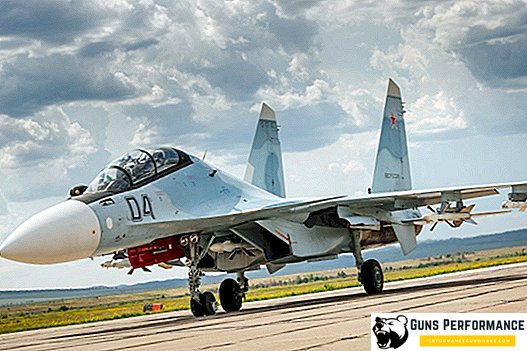
In connection with the almost complete halt of purchases of new equipment by the Russian Ministry of Defense, the management of the Sukhoi Design Bureau began the search for foreign customers for its products. In the shortest possible time the Su-30MK was created - a multi-purpose two-seater aircraft, the first flight of which took place in 1993. The nomenclature of the armament of the vehicle was significantly expanded, its take-off weight increased from 30 to 38.8 tons, the combat load doubled, and the life of the power plant and airframe significantly increased.
The new fighter was offered to India - the traditional customer of Soviet military equipment and weapons. Already in April 1994, the first meeting of the Russian-Indian working group was held, which was studying the possibilities of supplying the Su-30MK to India, as well as organizing the production of new fighters in this country. At the end of 1996, a contract was signed on the construction of forty Su-30MK combat vehicles for the Indian Air Force.
At the beginning of the new millennium, the designers of the Sukhoi Design Bureau developed a new modification of the fighter - the Su-30MKI. It was created specifically for the Indian Air Force. In fact, the Su-30MKI is a new generation car. The aircraft was equipped with engines with variable thrust vectoring and front horizontal tail, which significantly improved the maneuverability of the fighter in all flight modes.
Soviet (Russian) warplanes were almost always inferior to their Western competitors as avionics. To eliminate this shortcoming, the avionics for the new fighter was developed in a wide international cooperation with the participation of companies from France, Israel and India. As a result, the Su-30MKI received a new radar with a passive phased array.
The fighter was so successful that they became interested in the Russian defense ministry. In September 2012, for the first time, the Su-30SM, commissioned by the Ministry of Defense of Russia, climbed into the sky. By the end of the year, two new cars were handed over to the Russian Air Force.
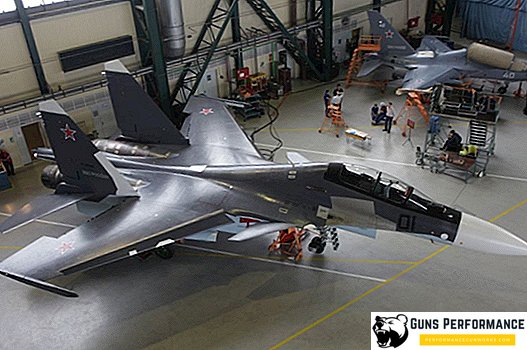
Such a solution does not look surprising. First of all, the Su-30SM has really excellent technical characteristics, it surpasses all foreign analogues in maneuverability. Secondly, the creators paid much attention to the fighter avionics: thanks to the use of foreign systems, the Su-30SM is not inferior to the best Western combat vehicles. However, there is one more explanation of the interest of the Ministry of Defense: this aircraft has been mass-produced for many years, its production has been completely polished, the “children's” diseases of the machine have been eliminated, all the wishes of the pilots have been taken into account.
Su-30SM - a multi-purpose aircraft. He is able not only to conduct air combat and hit modern and prospective enemy planes, but also to strike at ground mobile or stationary targets of the enemy. Su-30SM is able to accompany and cover attack aviation groups, counteract enemy electronic warfare systems, and provide target designation for the aircraft of its group. This fighter can also be used in maritime theaters of warfare: the Su-30SM is able to detect and destroy enemy surface ships on their own or as part of a group of aircraft.
Device
The Su-30SM is a two-seat heavy fighter equipped with two AL-31FP dual-engine engines with variable thrust vectoring and front horizontal tail. In general, its size and layout of the fuselage is completely repeated by the Su-30 and Su-30MKI fighters. The pilots are housed in a tandem cockpit.
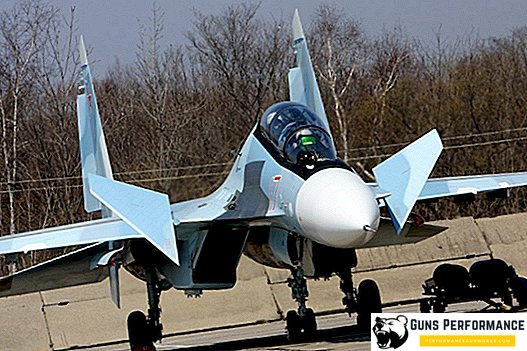
One of the main advantages of the Su-30SM is its ultra-maneuverability: the aircraft is unstable in the longitudinal channel, so its flight is provided by an electro-remote control system (EMF), which controls the rudders and rotary nozzles of the engines. The high degree of maneuverability of the aircraft is achieved through the CIP and thrust vector-driven engines.
The structure of the power plant of the aircraft includes two engines AL-31FP, placed at an angle of 32 degrees to each other. Their nozzles can deviate in the vertical plane by ± 16 ° and up to ± 15 ° in any direction. This allows the thrust vectoring to be directed along the yaw and pitch. Nozzles can deviate both together with the control planes of the aircraft, and separately from them.
However, the main "highlight" of the Su-30SM is its cabin. The aircraft is equipped with an onboard radio-electronic station with a phased array, which allows it to detect and drive fifteen air objects and simultaneously attack four of them. The Su-30SM used a system of helmet-mounted target designation, as well as an indication on the windshield. In addition, the cockpit is equipped with multi-functional LCD screens. All this provides pilots with the highest level of awareness of the air situation.
Suspended containers with laser and infrared aiming equipment can be installed on the Su-30SM. The fighter is equipped with an inertial navigation system with a satellite signal receiver from the GLONASS system, this ensures high accuracy of the route. Su-30SM can perform automatic flight in various modes, including low-altitude flight, landing approach, as well as during an attack against ground and surface targets. The system providing automatic control is connected to the navigation system.
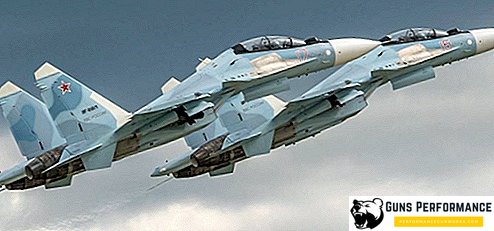
Su-30SM belongs to the fourth generation of fighters, its design does not use stealth technology. The aircraft has EW Sorption and Khibiny complexes, which are not only capable of suppressing the relatively low-power radar of fighters, but also neutralize ground-based radar complexes.
If we talk about the electronic stuffing Su-30SM, then it should be noted that it is built on the concept of "open architecture of the board." This makes it easy to include in the avionics new systems of domestic and foreign production. That is what determines the high versatility of the Su-30SM, which allows in the shortest time to convert an interceptor fighter into a strike aircraft.
The combat load of the Su-30SM fighter is 8 thousand kg. The aircraft has twelve suspension units, which can be placed a wide range of rocket-bomb weapons. It can be six guided missiles for air combat at medium or short distances, unguided bombs weighing 500 or 250 kg, containers with NAR. In addition, the aircraft is armed by default with a 30mm cannon GSH-30-1.
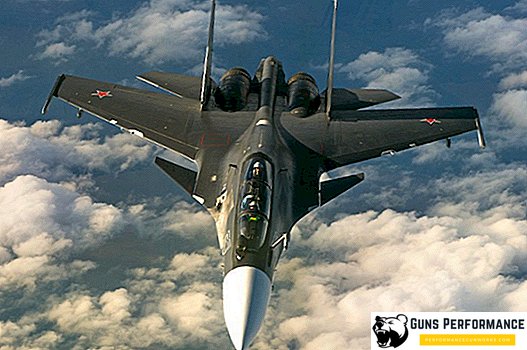
Specifications
- length - 21.9 m;
- height - 6.36 m;
- poppy. take-off weight - 34,500 kg;
- Max. speed - 2125 km / h;
- combat radius of action - 1500 km.
- crew - 2 people;
- armament - 30 mm cannon GSH-30-1, rocket armament;
- total number of suspension points - 12;
- full combat load - 8000 kg.






